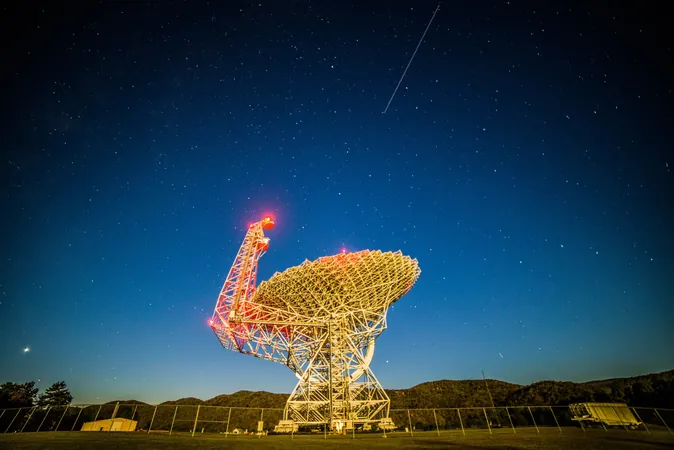
Alarming Discovery: New Starlink Satellites Emit 32 Times More Radio Waves, Threatening Astronomy!
2024-11-13
Author: Wei Ling
Introduction
Researchers utilizing the Low Frequency Array (LOFAR) radio telescope in Europe have revealed a startling development: the latest generation of Starlink satellites, known as V2-mini, emits a staggering 32 times more unintended electromagnetic radiation (UEMR) than their predecessors. This disturbing increase in radio wave emissions poses a significant threat to radio astronomy, which relies heavily on the detection of faint cosmic signals.
Research Findings
The findings, published in the journal Astronomy & Astrophysics on September 18, follow observational sessions conducted on July 19. During these sessions, LOFAR tracked the V2-mini satellites, which orbit at a lower altitude compared to earlier Starlink models. According to Cees Bassa, the lead researcher at LOFAR, the new satellites are 'about 10 million times brighter in radio waves than any faint objects LOFAR could locate.' The difference in brightness is comparable to the contrast between the faintest stars visible to the naked eye and the radiant glow of a full moon.
Impact on Astronomy
This alarming situation is compounded by the visual pollution created by satellites reflecting sunlight, which can interfere with optical astronomy. With SpaceX launching approximately 40 new V2-mini satellites each week, the frequency of these issues is expected to escalate rapidly.
SpaceX's Response
While SpaceX has made efforts to reduce the visual impact of their satellites by implementing measures to lower reflectivity, it appears that radio astronomy may endure a greater challenge. The company has previously collaborated with organizations such as the U.S. National Science Foundation and the National Radio Astronomy Observatory (NRAO) to address this growing concern. This includes a coordination agreement established in 2019 aimed at finding ways to limit the interference caused by Starlink satellites during astronomical observations.
Urgent Need for Action
Even with these efforts, the most recent findings point out that unintentional emissions still pose a problem that needs urgent attention. Experts suggest that raising awareness about the interference caused by UEMR, advocating for the establishment of radio-quiet zones, and imposing stricter regulations on satellite emissions could be vital steps in preserving the integrity of radio astronomy.
Conclusion
As the race for satellite internet continues, the astronomical community will be closely monitoring SpaceX's next moves. The future of radio astronomy depends on the willingness of companies like SpaceX to prioritize the preservation of our celestial observations alongside their commercial ambitions. Will they rise to the occasion, or will our night skies remain compromised by the glow of countless satellites? The clock is ticking!
 Brasil (PT)
Brasil (PT)
 Canada (EN)
Canada (EN)
 Chile (ES)
Chile (ES)
 España (ES)
España (ES)
 France (FR)
France (FR)
 Hong Kong (EN)
Hong Kong (EN)
 Italia (IT)
Italia (IT)
 日本 (JA)
日本 (JA)
 Magyarország (HU)
Magyarország (HU)
 Norge (NO)
Norge (NO)
 Polska (PL)
Polska (PL)
 Schweiz (DE)
Schweiz (DE)
 Singapore (EN)
Singapore (EN)
 Sverige (SV)
Sverige (SV)
 Suomi (FI)
Suomi (FI)
 Türkiye (TR)
Türkiye (TR)